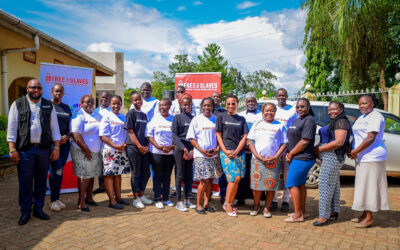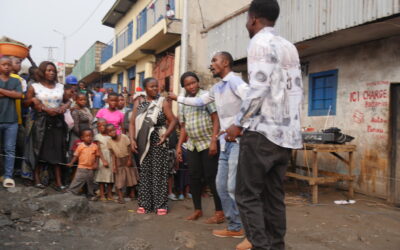Mining is a key source of export income for the Democratic Republic of the Congo (DRC or Congo). Minerals such as tin, tungsten, tantalum and gold are shipped to industrialized nations for use in electronics, jewelry, manufacturing and many other industries.
Congo’s mineral resources have the potential to help the nation’s economy expand and diversify. But at present, many Congolese people in mining zones toil in conditions of slavery, and much of the profit from mining benefits groups engaged in armed conflict.
A new Free the Slaves field investigation, called Congo’s Mining Slaves: Enslavement at South Kivu Mining Sites, is being released today.
The research was conducted to document the types, nature and scale of slavery at major mining sites in South Kivu province; to analyze the characteristics that cause Congolese workers to be vulnerable to enslavement; and to recommend solutions.
KEY FINDINGS:
- Scope of Slavery: 866 individuals were confirmed to be in various forms of slavery in three mining communities, out of 931 individuals interviewed by researchers.
- Types of Slavery: 7 types of slavery were identified: forced labor, forced prostitution, debt slavery, worst forms of child labor, peonage, forced marriage, sexual slavery.
- Child Slavery: 23 percent of those in slavery were under 18 years of age.
KEY RECOMMENDATIONS:
- DRC Government: Enforce Congo’s anti-slavery laws; demilitarize mining sites; provide universal free primary schooling; develop social protection procedures to ensure safety of people in mining zones.
- U.S. Government: Enforce Section 1502 of the Dodd-Frank Act and the Securities and Exchange Commission’s conflict minerals disclosure rule; exert diplomatic influence with DRC government.
- U.N. Peacekeeping Operation in Congo: Deploy peacekeepers at pilot sites for conflict-free mineral trading; prioritize monitoring and reporting of slavery in U.N Human Rights and Child Protection sections.
- Civil Society, Donor Governments, Aid Organizations: Support rights-based community development efforts, mineworker associations and alternative livelihood projects; incorporate slavery eradication into the design of humanitarian assistance programs.
- Multinational Corporations: Map product supply chains for slavery-tainted raw materials, and disclose findings; fund DRC community development efforts to reduce residents’ vulnerability to slavery.
- Consumers and Investors: Hold businesses and governments accountable for taking action.
Free the Slaves has begun implementation of community-based interventions to respond to slavery uncovered by earlier research in North Kivu province. Today’s report updates progress made so far, and recommends that similar interventions be implemented to benefit residents of South Kivu province, as well.
The survey team findings are valuable information for a wide variety of actors working to improve the status of human rights in eastern DRC, including those focused on human trafficking, “conflict minerals,” child rights, gender-based violence, and rural poverty.
The report is available for download from the FTS Congo webpage.


